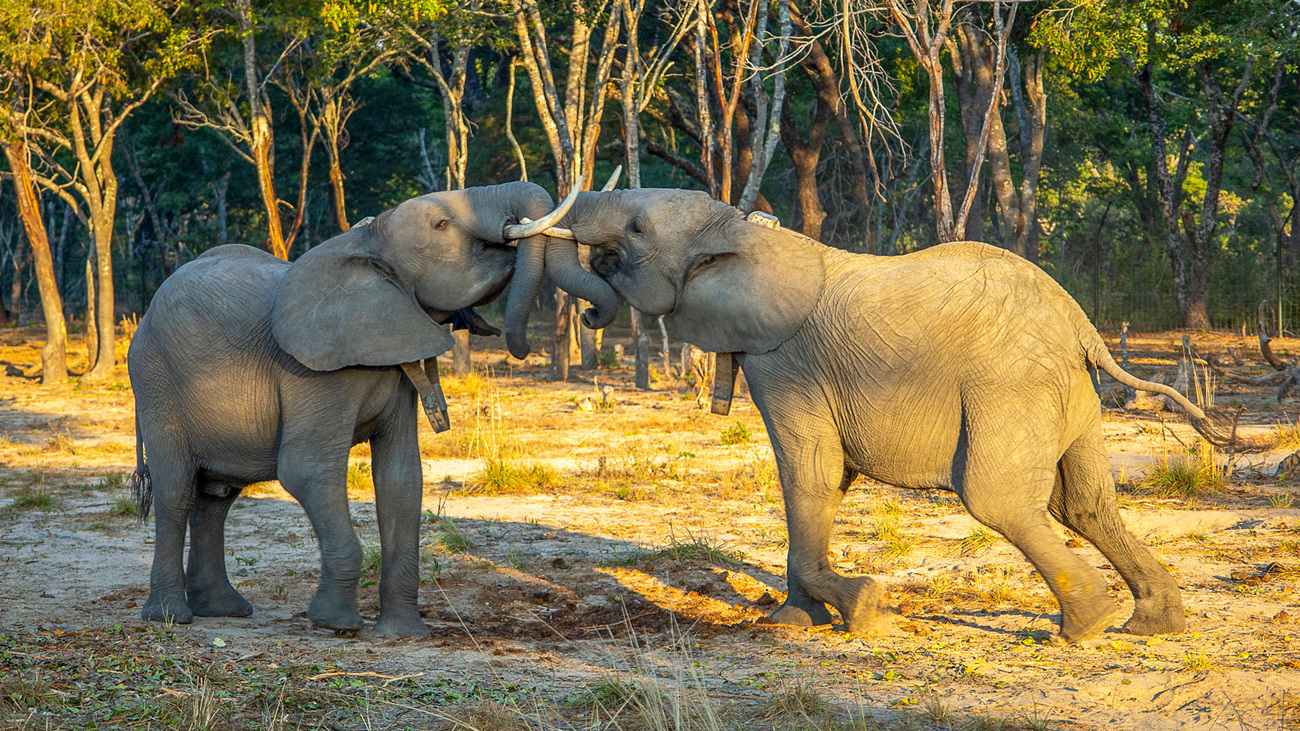Lusaka Elephant Nursery - Zambia
Orphaned elephants need a new herd and a new homeGPS collars track orphaned elephants released back to the wild in Zambia
GPS collars track orphaned elephants released back to the wild in Zambia

Four elephants, orphanage herd members at Game Rangers International (GRI), have been fitted with satellite collars in Kafue National Park, Zambia.
The exercise was part of a post-release monitoring initiative meant to observe their movements and generate valuable data for the sustainable management of the world’s largest land animals.
The two-day collaring operation was carried out by GRI with support from IFAW, African Parks (AP), and the Department of National Parks and Wildlife (DNPW) Zambia.
The four orphaned elephants—Chamilandu, Tafika, Rufunsa, and Mosi—are GRI-Kafue Release facility graduates who, in 2021, decided to leave the soft release facility and pursue a life back in the wild.
“Collaring is an important part of our conservation work and provides essential information on how the released orphaned elephants integrate with the wild population,” says Mary Muyoyeta, GRI research assistant. “The GPS collars also provide us with data to mitigate human-elephant conflicts.”
“Because elephants are highly sociable, released elephants oftentimes join the wild herds,” says Neil Greenwood, IFAW’s wildlife rescue director. “And by being able to monitor them, we are not only starting to learn about the orphaned elephants but also beginning to understand the dynamics of the wild elephants which they join.”
collaring elephants: safety first
A total of 16 elephants have been released back into the wild since the establishment of the GRI Kafue release facility.
The risky, time-consuming, and difficult mission was successfully executed with expert coordination and communication between the ground teams and the helicopter crew.
When the helicopter crew identified the targeted elephants, the pilot skillfully separated them from the herd and drove them to an open area that the ground teams could access. Once they were in an open area, the veterinarian shot the tranquilizer dart with a gun from the air, after which the ground team rushed to ensure that the collar is fitted correctly around the elephant’s neck as soon as possible.
On average, the entire process takes up to 20 minutes. While one team focuses on fitting the satellite collar, another team collects blood samples and takes measurements.
Immediately after the team finished taking measurements and fitting the collar, the veterinarian administered a reversal drug, and within minutes, the elephant was back on its feet, ready to roam.
“As we conduct the collaring exercise, the safety of the animal comes first,” says Muyoyeta. “We cannot continue the operation if the elephant is in danger or the environment is not safe. Yes, it might be a bit stressful for the elephants, but the long-term benefits outweigh the minimal stress they undergo during the collaring process.”
tracking where elephants roam
First to be collared was Tafika, a 14-year-old male elephant rescued in 2008 from South Luangwa National Park at only nine months old after being separated from his mother and herd during a human-elephant conflict.
Next was Chamilandu, one of the first rescues of the GRI Elephant Orphanage Project, lovingly known as Chamma. She has been an integral member of the GRI herd since she was rescued after a group of poachers shot her mother. She has previously assumed the role of surrogate mother for the other rescued orphans at the Lusaka nursery and gave birth to her own calf.
The two-day mission concluded with the fitting of the satellite collar on Mosi.
The team watched with great satisfaction as Mosi stood up after receiving the reversal drug and slowly moved back into the bush to join the wild herd.
“We are incredibly grateful to our partners for contributing to the successful collaring exercise,” says Muyoyeta. “We would not have been able to conduct this exercise without their financial and technical support.”
“By being able to collar these elephants and by starting to understand their movement patterns, this is a major benefit, particularly in the concept of IFAW’s Room to Roam,” says Greenwood. “When we start to understand where the elephants need to be, we can start focusing our efforts on protecting these elephants within those areas to make sure that they are safe and secure for generations to come.”
Related content
Our work can’t get done without you. Please give what you can to help animals thrive.